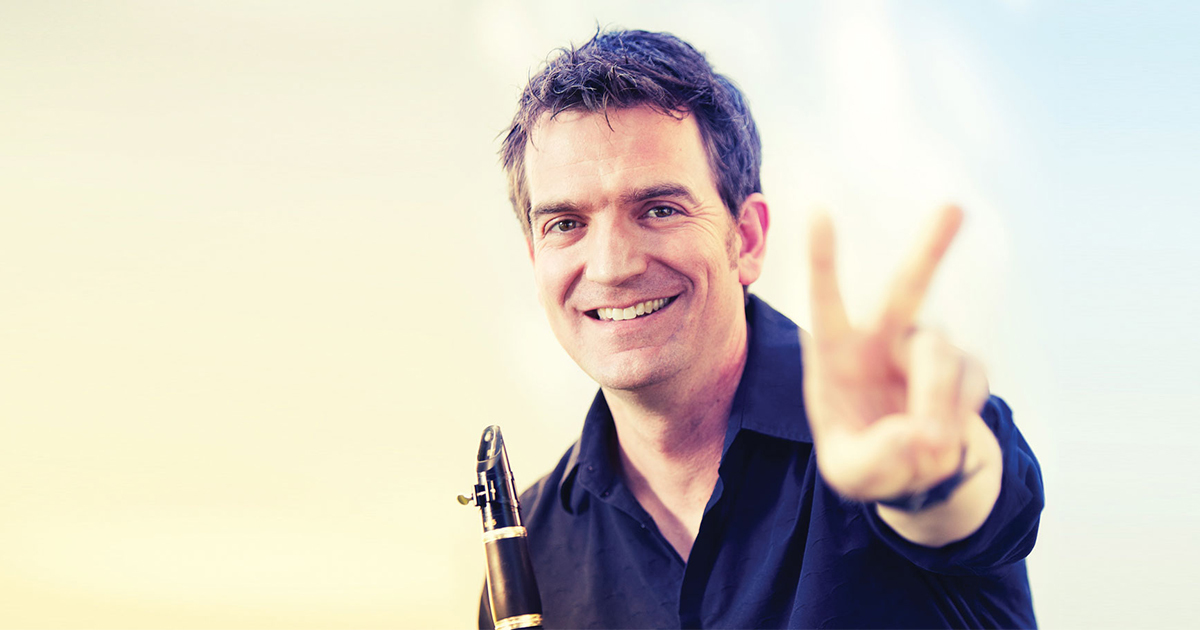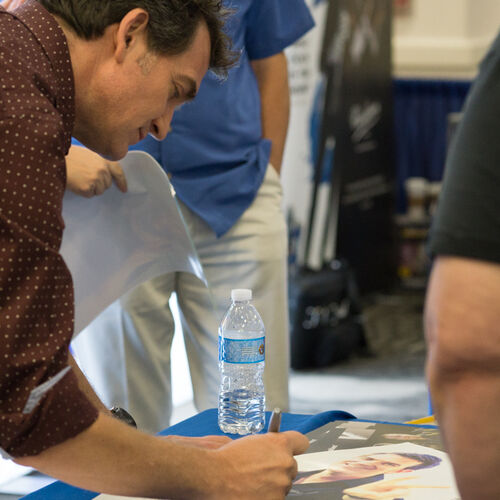Amplifying Your Clarinet and Performing Contemporary Music
with Gregory Oakes
Date Posted: November 03, 2017

Interview conducted by Rebecca Scholldorf
What projects are you working on?
I just finished a recording project of pieces by Helmut Lachenmann (German composer). The whole CD is three pieces: Dal Niente, a solo clarinet piece, then two trio pieces: Allegro Sostenuto and Trio fluido. I’ve been working on it for a little while and I’m very excited to finally to get it together. It has a really adventurous sound. For example, the piece Dal Niente “from nothing” is kind of a double meaning. You have dynamics from really quiet, but also he’s approaching the clarinet from nothing—as in someone has never heard the clarinet before. What kind of sounds does this thing make? He’s creating all of these different air noises and key noises. So it’s a really inventive piece that I’m excited to work with. That’s been pretty fun!
When will that be release?
It will be coming out in the fall. It’s all together, all recorded. Just getting the final touches on there.
What did you perform at ICA 2017?
I’m going to be performing two pieces: John Mackey’s Damn for amplified clarinet and percussion quartet and an Eric Mandat tribute on Saturday, Folk Songs. I heard him play that for the first time in 1989 and I was really blown away as a young clarinetist. I was so excited by hearing this, especially the fourth movement where he plays like a shakuhachi. I was absolutely floored that the clarinet could make all of these sounds. That was the inspiration for my doing the contemporary music that I do now. I’m actually really excited to be playing that as a tribute to him, for all of the stuff that he has done over the years.
How will you be amplifying the clarinet?
I have a rig. Here are the arms - the bell - and then I have these two microphones that fit onto the mounts there. It’s used to balance out the volume of the clarinet versus four percussionists. It’s pretty hard to do that. On the high end you certainly can, but most of the stuff is going to get drowned out. It also changes the timbre a bit as well.
There are two different mics: one’s at the bell and one’s in the middle. Depending on what part of the instrument you’re on, different mics will pick up the sound.
Do you have any advice for people getting into amplified sound or contemporary music?
I think the first thing is to just listen to things and find something that’s really exciting, because I think sometimes it’s hard to know how to get to it. You might say abstractly “I would love to play this kind of music.” But for me, it came from something I really wanted to get into and then learning all the stuff you do to make it possible. It works the best when you’ve got a sound in your mind that you’re going for. Rather than getting a piece of music and saying to yourself, “Umm, what do I do with this?” For me, being inspired by something that you hear is like, “Oh yeah, I can do something like that.” I think that works the best. Because then you’re working with that energy and excitement.
Is that how the Eric Mandat piece influenced you?
Yes! That was the first one that made me feel like that. Since then, there have been many composers or different sounds, and different settings I’ve worked with. There’s a composer that I’ve worked with for 20 years now. His name is Ken Ueno. He and I have done collaborations since we were students together - he’s written lots of things. Sometimes that energy of working with a composer is one of the really exciting things. Because then you create a piece together. He is writing that piece knowing what I have to offer and then I’m giving him feedback. So rather than having it be just like “here’s the music play it, “you’re an integral part of the birth of that. To me that’s very exciting. People don’t have to wait until they’re already professionals to do that—they can find a composer while they’re students and be creating those things at the same time.
Do you explain your pieces before you give a performance?
I like to, when the venue allows that. I give people something to listen for and explain it. Hey, listen to this if the piece has something programmatic about it. But I also feel when I’m performing, my job is to really make it very clear what is exciting and interesting about the piece. There’s lots of different ways to perform a piece. “Here’s what’s on the page, here’s what’s exciting about the piece, and here’s what I love about the piece!” Just like anyone who is talking about something that they’re passionate about—there’s a way of describing it. What we really need to do in playing contemporary music is to show in the performance. Give people something to listen to but then really take them along on the journey. *Gestures arching movement with hands* I think about music in these long arcs and I think that whether it’s Mozart or a piece that you’re premiering for the first time, it always brings that continuity. You have to bring people along and make sure that they feel ownership in where you’re going.
What’s your favorite extended technique?
It’s multiphonics! My Twitter handle is @multiphonic! I love multiphonics because they make the clarinet sound like so many different things. Some multiphonics are really delicate and gentle—these dyads (just two notes). Some are really raucous, and there’s everything in between. So, when you’re doing a solo clarinet piece, you’re just hearing the clarinet’s timbre over and over again. It can get limiting. You can listen to a piano solo because it can have all of these options of different registers and textures. If we’re going to ask a listener to sit for a while, you want to give an array of timbres, and I think multiphonics can do that especially well.
You have to form a relationship with your equipment and understand how it works. - Greg Oakes
What gear are you currently using?
My mouthpiece is a Vandoren M15—just the standard. I play on the Rue Lepics #4.5 and an M|O ligature. My clarinet is a Buffet R13 with a Moennig barrel. Nothing is extraordinarily strange, it’s just good, solid equipment that works really well for me. I tend to not change my equipment much. I find what works and then stick with it. You have to form a relationship with your equipment and understand how it works. And every time you change something, that part changes. For me, I feel like if I were to change too much, I would constantly be re-adjusting myself. I’d rather not. I’ve been playing on this setup for a while now. I found something I feel good with, and I’ll keep doing that.

